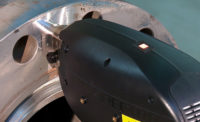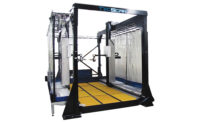Consistent testing of products and materials can reduce waste and detect potential problems before they become major issues. Materials test software can be a key ingredient in rooting out these problems.
Manufacturers and suppliers perform many different types of quality control tests that have many different requirements and procedures. These methodologies are typically developed and overseen by standards organizations such as the American Society for Testing and Materials (ASTM), the International Organization for Standardization (ISO), the Committee for European Standardization (CEN), the Japanese Industrial Standards Committee (JISC) and the Deutsches Institute fur Normung (DIN), as well as a company's own internal quality control personnel. The test standards define the way samples are taken, prepared, conditioned and tested, what results are needed and the calculations used to achieve them. After a manufacturer identifies the required tests for its products to be accepted, the company can dictate to its suppliers what standards and test equipment they must use.
For instance, a tire manufacturer may need to perform quality checks on the rubber's strength and its adhesion to the tire's Kevlar or steel belting. Based on the scope of requirements, the equipment suppliers' application specialists recommend the machine capacity, appropriate tooling, and relevant software test modules, all as part of a total testing equipment solution. The test modules contain the algorithms for the calculations specified as part of the results within the applicable standards. The stress and strain graphs and corresponding results can be displayed and printed.
Using a reliable monitoring program, the user can employ statistical process control (SPC) to alert the quality control team to out-of-tolerance conditions that could create problems in the supply and manufacturing processes. It allows corrective action to be taken to prevent an interruption to workflow.
Examples of test solutions are as different as the materials and products. To understand how extreme changes in temperature affect polymer properties of new acrylic and vinyl-acrylic building products under development, Rohm and Haas Co. (Philadelphia) installed a benchtop universal testing machine (UTM), a hot and cold temperature chamber and testing software at its research facilities in Spring House, PA. The company uses a 10 kilonewton (2,000 pounds of force) UTM to test tensile, elongation and other properties using test methods such as ASTM D 412 or ASTM D 2370. Other tests and methods are used to assess formulation stability, weather resistance, durability and flexibility. A complete characterization may encompass 80 measurements--10 sets of materials measured four Arial each at two different temperatures. Data is collected and shared over the facility's local area network, with the software cutting work time in half from the previous method. Rohm and Haas also uses the software to create statistics, analyze test results and generate reports.
Laboratory Testing Inc. (LTI, Hatfield, PA) and MMA Laboratories (Newtown, PA), two Philadelphia-area independent accredited metals testing laboratories, use material test machines and software to help perform tests and inspections ranging from tensile, compression, hardness and other mechanical destructive tests to magnetic particle, ultrasonic, X-ray and fluorescent penetrant nondestructive tests. For example, LTI offers one of the most comprehensive fastener testing capabilities of any independent test facility in the United States. The company uses a 120,000-pound capacity UTM, which it uses in conjunction with automatic data acquisition and machine-control software, plus three computer-controlled UTMs that allow quick testing of a full range of fasteners and other customer products and materials.
An automated testing system is used by Ispat Inland Inc. (East Chicago, IN), one of the largest steel companies in the United States. It uses a mechanical horizontal testing system (MHT) with a 30,000 pounds of force (150,000 kilonewton) capacity on a continual basis at its quality control center. During the day, operators monitor the testing; overnight, the machine runs tensile tests completely unassisted. Flat steel specimens are tested according to ASTM, DIN, ISO and JIS test methods, as well as those of European Norm (EN) standards adopted by CEN. The wide range of global standards is required because Ispat Inland ships coils and bars to customers in 60 countries. A typical specimen size is 1 inch by 9 inch, with the center of the specimen reduced according to ASTM, JIS, DIN, or other requirements. Much of the testing is done per ASTM A 370 and E-8, which have to do with the mechanical testing of steel, and ASTM E 646 and ASTM E 517 to determine n and r values. When a specimen is tested, the automated MHT's data acquisition system immediately transmits the results to the center's mainframe computer for analysis and long-term storage in a historical database. Technicians can access this data and analyze it using UTM software running on the automated system's personal computer.

